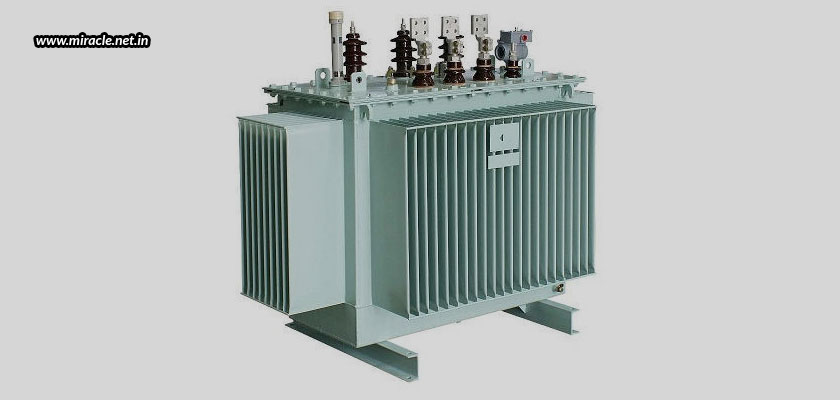Transformer polarity depends on whether the coils are wound around the core clockwise or counterclockwise, and how the leads are connected. Photo: Youtube
Transformer polarity is important when paralleling transformers for additional capacity or hooking up multiple single-phase transformers to form a three-phase bank.
6-2 Three-Phase Power Measurement. 199 Using the two-wattmeter method to measure the total power supplied to a three-phase load. Power factor in three-phase circuits. 6-3 Phase Sequence. 223 Definition of phase sequence, and its importance for certain types of three-phase loads. The high voltage bushings are arranged H3, H2, H1, and H0 from left to right when facing the transformer from the high-voltage side. When facing three-phase transformers from the low-voltage side, the low-voltage bushings are arranged X0, X1, X2, and X3 from left to right.
Polarity marks show the connections where the input and output voltages have the same instantaneous polarity, this is important when hooking up current transformers for relay protection and metering.
Transformer polarity depends on whether the coils are wound around the core clockwise or counterclockwise, and how the leads are connected. Often, polarity marks are shown using symbols, such as a dot or plus-minus marks, on the transformer and nameplate.
How to test transformer polarity
You can easily test for transformer polarity by using a reduced voltage source to excite the primary winding. First, jumper the H1 terminal to the X1 terminal of the transformer. Next, connect a volt meter between the H2 and X2 terminal. Apply a reduced voltage across H1 and H2, and record the voltage measured on the meter.
DANGER: Use the lowest AC voltage level possible to excite the winding and reduce potential hazards. An adjustable ac voltage source is recommended to keep the test voltage low.
You can easily test for transformer polarity by using a reduced voltage source to excite the primary winding. Photo: USBR.
If the value equals the sum of the high and low windings, the transformer is said to have additive polarity. Otherwise, if the meter reads less than the voltage applied the polarity is subtractive.

1 Phase To 3 Phase Transformer
ANSI Rule of Thumb for Transformer Polarity
Another rule of thumb for determining transformer polarity comes from ANSI designations. Under these standards, if you face the low-voltage side of a single-phase transformer (the side marked X1, X2), the H1 connection will always be on your far left.
If the terminal marked X1 is also on your left, it is subtractive polarity. If the X1 terminal is on your right, it is additive polarity.
Think of transformer polarity in terms of current direction. Whenever current is flowing through a polarity marked terminal on the primary winding, the current leaving the secondary winding will travel in the same direction, exiting the terminal with the same polarity marking.
Whenever current is flowing through a polarity marked terminal on the primary winding, the current leaving the secondary winding will travel in the same direction, exiting the terminal with the same polarity marking. Photo: Mike Hennesey
Additive polarity is common for small distribution transformers. Larger transformers are generally subtractive polarity.
Transformer Bushing Arrangement

The placement of the bushings in a three-phase transformer is also standardized. The high voltage bushings are arranged H3, H2, H1, and H0 from left to right when facing the transformer from the high-voltage side. The eden of grisaia torrent download.
When facing three-phase transformers from the low-voltage side, the low-voltage bushings are arranged X0, X1, X2, and X3 from left to right. The terms 'additive polarity' and 'subtractive polarity' do not apply to three-phase transformers.

1 Phase To 3 Phase Transformer
ANSI Rule of Thumb for Transformer Polarity
Another rule of thumb for determining transformer polarity comes from ANSI designations. Under these standards, if you face the low-voltage side of a single-phase transformer (the side marked X1, X2), the H1 connection will always be on your far left.
If the terminal marked X1 is also on your left, it is subtractive polarity. If the X1 terminal is on your right, it is additive polarity.
Think of transformer polarity in terms of current direction. Whenever current is flowing through a polarity marked terminal on the primary winding, the current leaving the secondary winding will travel in the same direction, exiting the terminal with the same polarity marking.
Whenever current is flowing through a polarity marked terminal on the primary winding, the current leaving the secondary winding will travel in the same direction, exiting the terminal with the same polarity marking. Photo: Mike Hennesey
Additive polarity is common for small distribution transformers. Larger transformers are generally subtractive polarity.
Transformer Bushing Arrangement
The placement of the bushings in a three-phase transformer is also standardized. The high voltage bushings are arranged H3, H2, H1, and H0 from left to right when facing the transformer from the high-voltage side. The eden of grisaia torrent download.
When facing three-phase transformers from the low-voltage side, the low-voltage bushings are arranged X0, X1, X2, and X3 from left to right. The terms 'additive polarity' and 'subtractive polarity' do not apply to three-phase transformers.
Three-phase transformer bushing arrangements. Photo: TestGuy.
